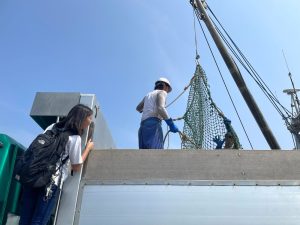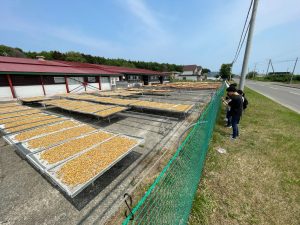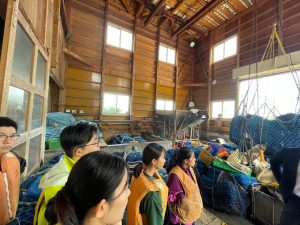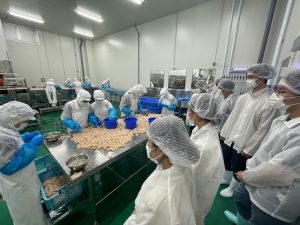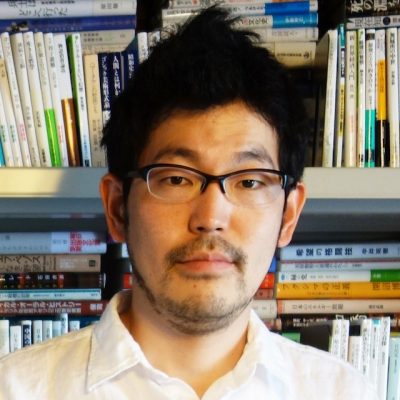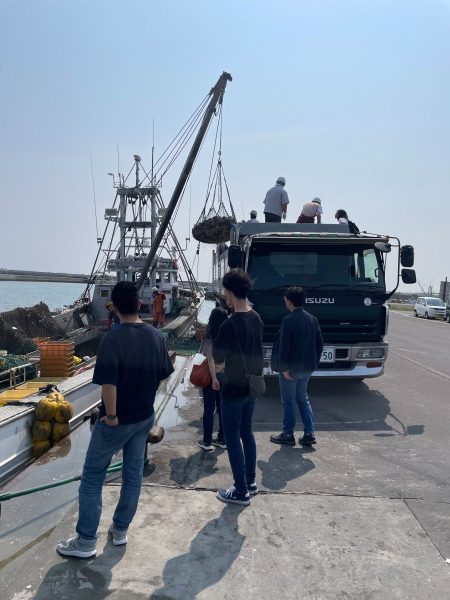
October 18, 2024
レポート:北海道ホタテ産業調査Report: Hokkaido Scallop Industry Survey
2024年7月15~18日、開沼博研究室が主催し北海道ホタテ産業実態調査が実施されました。前年8月より開始された東京電力福島第一原子力発電所からの処理水海洋放出による経済・社会的影響が最も大きかった北海道のホタテ産業について、聞き取り、現地視察を通して検証することが本調査の目的でした。
「リスクコミュニケーション」「原子力災害論」などの講義を受講する学際情報学府の学生を含む6名が参加し、北海道新聞社のご協力のもと、主要なホタテ生産地であるオホーツクエリアと噴火山エリアにおいて、複数の漁業者・加工業者・漁業協同組合を訪問しました。
その中では、以下のようなことなどがわかりました。
・北海道において、全魚種での生産の4割が、漁獲量が安定するホタテになっていること。
・水産加工業における担い手不足が進む中で、「冷凍両貝」と呼ばれる未加工状態のホタテの対中国輸出量がここ15年ほどで急増していたこと。
・ホタテの殻剥きのような人手がかかる部分の機械化を進める制度があっても現場のニーズとのミスマッチがありその利活用が不十分であったこと。
・処理水海洋放出後の、ホタテに対する「食べて応援」しようという機運の高まりは「玉冷」と呼ばれる加工済みの貝柱部分の消費には効果があっても「冷凍両貝」の余剰在庫の解消への効果は限定されたこと。
・中国依存のリスクが認識された中、代替輸出先の模索や、国内加工・消費の強化などが一定程度進みつつも、未だ、需給バランスはかつての水準には至らず、取引単価は下げ止まっていること
調査に参加した学際情報学府修士課程1年の洪瑋廷さん(山口いつ子研究室)は「実際に現場に行くことで、知見を最大限に引き出すためには、どの組織の誰かに何を質問するかを想定し、その場の文脈を考慮しながら問題を提起することの難しさを実感し勉強になった」と語りました。
今後、開沼研究室では、調査結果を学会報告等で公表していく予定です。
記事:開沼博(准教授)
On July 15-18, 2024, a survey of the Hokkaido scallop industry was conducted under the auspices of Hiroshi Kainuma’s laboratory. The purpose of the survey was to examine, through interviews and site visits, the scallop industry in Hokkaido, which has suffered the most severe economic and social impact from the discharge of treated water from TEPCO’s Fukushima Daiichi Nuclear Power Plant beginning in August of the previous year.
With the cooperation of the Hokkaido Shimbun, we visited several fishermen, processors, and fishery cooperatives in the Okhotsk area and Funka Bay area, the main scallop production areas in Hokkaido.
From the survey, we learned that scallops account for 40% of the total production of all fish species in Hokkaido, and that the size of the catch is stable. While there is a shortage of workers in the seafood processing industry, the amount of scallops exported to China in an unprocessed state, known as “reito-ryogai,” has increased sharply over the past 15 years or so. Even though there was a system to promote mechanization of labor-intensive tasks such as scallop shelling, there was a mismatch with the needs of the industry on the ground, and the utilization of this system was inadequate. After the discharge of the treated water into the ocean, the growing “eat and support” movement for scallops had a positive effect on the consumption of processed scallops, called “tama-rei,” but this has had only a limited effect on the elimination of the surplus stock of frozen scallops. The risk of dependence on China was recognized, and the search for alternative export destinations and the strengthening of domestic processing and consumption have progressed to a certain degree. Nevertheless, the supply-demand balance has not yet reached the level of the past, and the transaction unit price has stopped falling.
Hong Hyeonjeong (Itsuko Yamaguchi Laboratory), a first-year master’s student in the Interdisciplinary Information Studies Department, who participated in the survey, said, “By actually going to the field, I realized and learned how difficult it is to pose questions to someone from any organization and to consider the context of the situation in order to maximize the findings.”
In the future, Kainuma Laboratory plans to publish the results of the survey in conference reports and other publications.
Text:Hiroshi Kainuma (Associate Professor)
English proofreading: David Buist (Project Senior Specialist)
主担当教員Associated Faculty Members
准教授
開沼 博
- 社会情報学コース
Associate Professor
KAINUMA, Hiroshi
- Socio-information and communication studies course


